
Welcome to Nightpixels, a data-driven visual blog about investing, business, and technology.
Nightpixels is published each week by Nightview Capital Research Analyst Cameron Tierney. Follow him here on X.
Sign up below to receive The Nightcrawler newsletter.
Error: Contact form not found.
Microsoft unveils AI-driven PCs
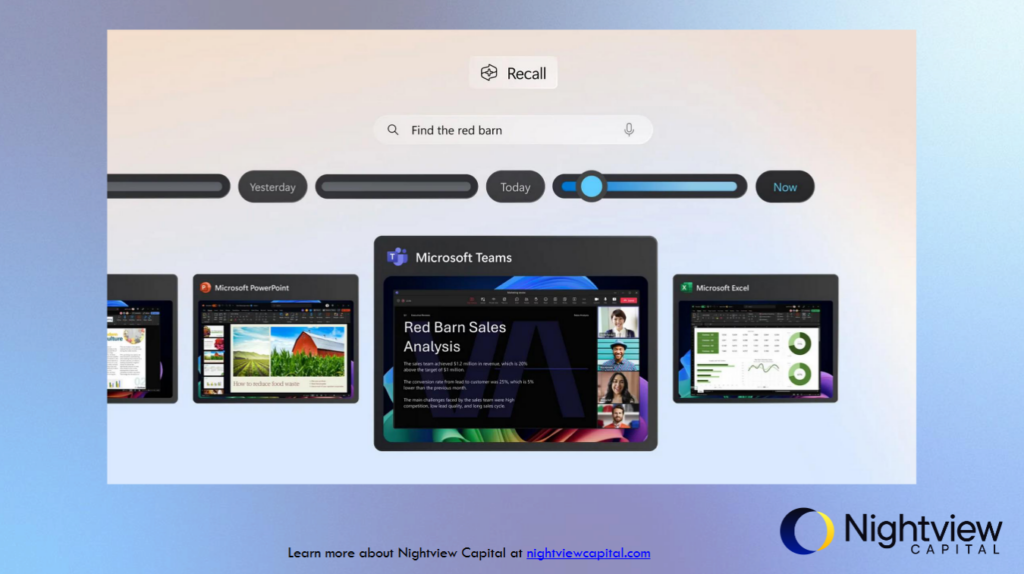
Earlier this week, Microsoft unveiled an updated generative AI feature in Windows 11 called “Recall.” The feature helps users locate and access their recent activities and files with a new interface. It also allows users to search for specific documents with natural language, like “Find the red barn,” and navigate through their computer activities. The feature itself is older (i.e. Windows 10) but the ability to use natural language to query the Recall bank is a new innovation. Microsoft also killed the Windows 10 iteration after its performance was weak. Now with gen AI, the feature has been resurrected
Source
IEA expects AI data centers to drive electricity use higher
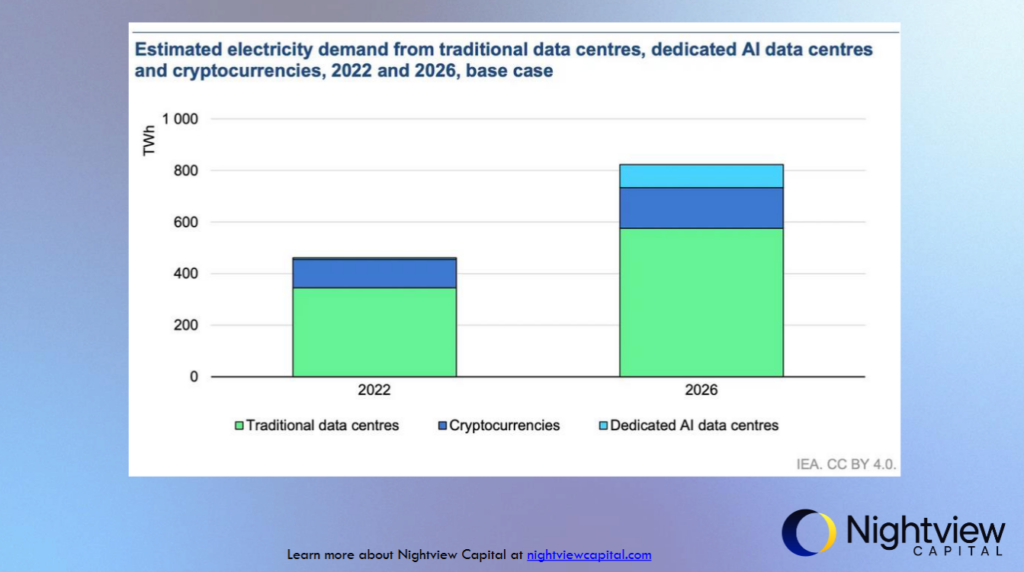
This chart compares the estimated electricity demand from traditional data centers, dedicated AI data centers, and cryptocurrencies in 2022 and 2026, according to data from the International Energy Agency (IEA). In 2022, traditional data centers (represented in green) constitute the majority of the demand. By 2026, overall demand is expected to increase significantly with dedicated AI data centers (light blue) emerging as a new category as overall data center grows. Energy efficiency will increasingly become important to big tech’s bottom lines’ as powerful AI data centers proliferate.
Source
BofA says employee financial wellness shows positive trend
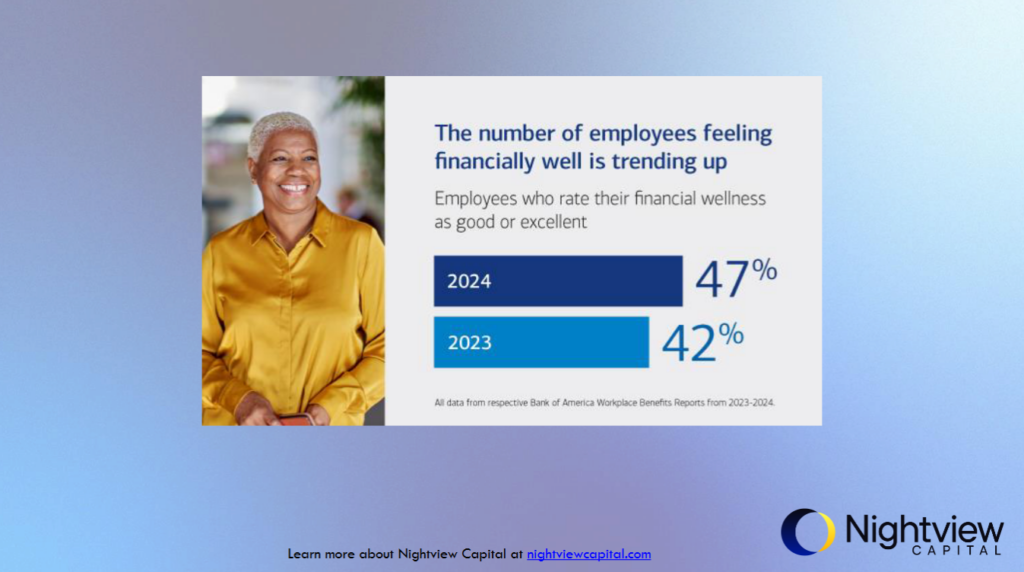
This infographic highlights the trend in financial wellness among employees based on Bank of America’s Workplace Benefits Reports from 2023-2024. It shows an increase in the percentage of employees who rate their financial wellness as good or excellent, from 42% in 2023 to 47% in 2024. The upward trend indicates improved financial conditions or perceptions among the workforce over the past year, contrary to media narratives that Americans are feeling poorer than ever.
Source
Starbucks’ China sales and store growth have diverged
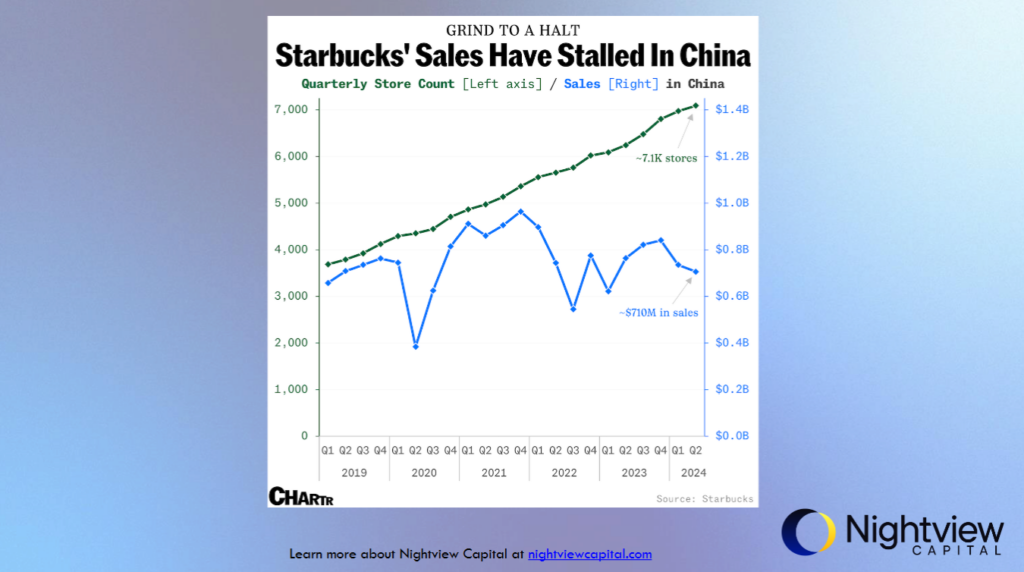
This chart shows Starbucks’ quarterly store count (left axis) and sales (right axis) in China from Q1 2019 to Q1 2024. Despite a steady increase in the number of stores, reaching approximately 7,100, sales have fluctuated and recently stalled around $710 million on a quarterly basis. The data suggests that while Starbucks is expanding its physical presence in China, it could be facing challenges in maintaining consistent sales growth. Sales are effectively flat since 2019, while the number of stores grew linearly.
Source
The importance of time arbitrage
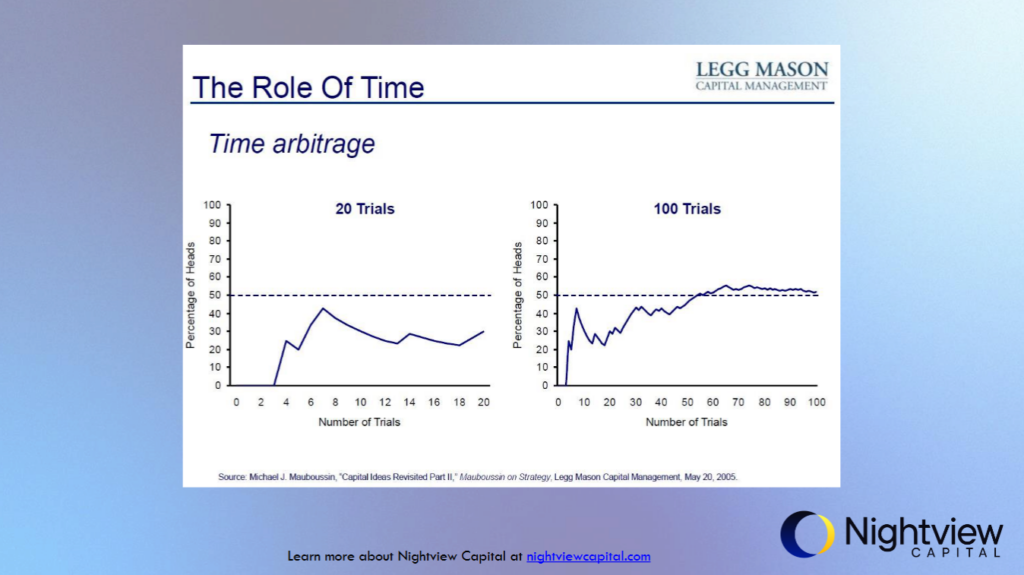
The chart above compares the outcomes of coin toss trials to illustrate the concept of time arbitrage. It contrasts results over 20 trials versus 100 trials. With 20 trials, the percentage of heads varies widely, showing high volatility. Over 100 trials, mean reversion stabilizes the percentage around 50%, demonstrating that larger sample sizes (over time) reduce variability and lead to more predictable outcomes. This principle is used to explain the importance of long-term perspectives in investment strategies in order to overcome short-term volatility and realize outsize returns over time.
Source
When will all pixels be generated?
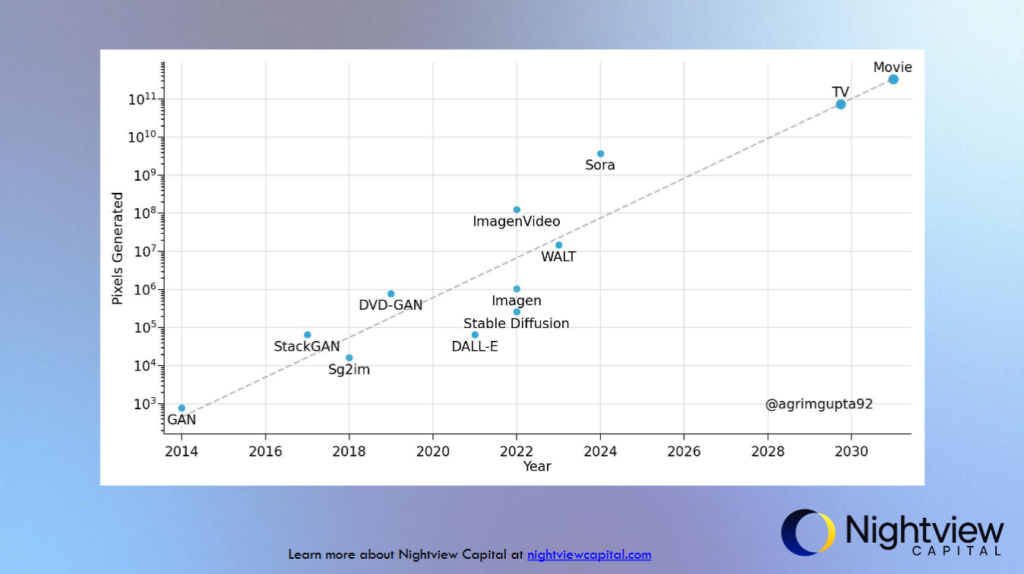
This chart plots the progression of pixel generation capabilities from 2014 to an estimated point in the future. It tracks various technologies like GAN, StackGAN, and DALL-E, showing a logarithmic increase in the number of pixels generated over time. The trend suggests that by around 2028-2030, technologies may reach the capability of generating the number of pixels of all movies and TV shows ever made, indicating rapid advancements in AI-driven image and video generation.
Source
The proliferation of space junk is continuing
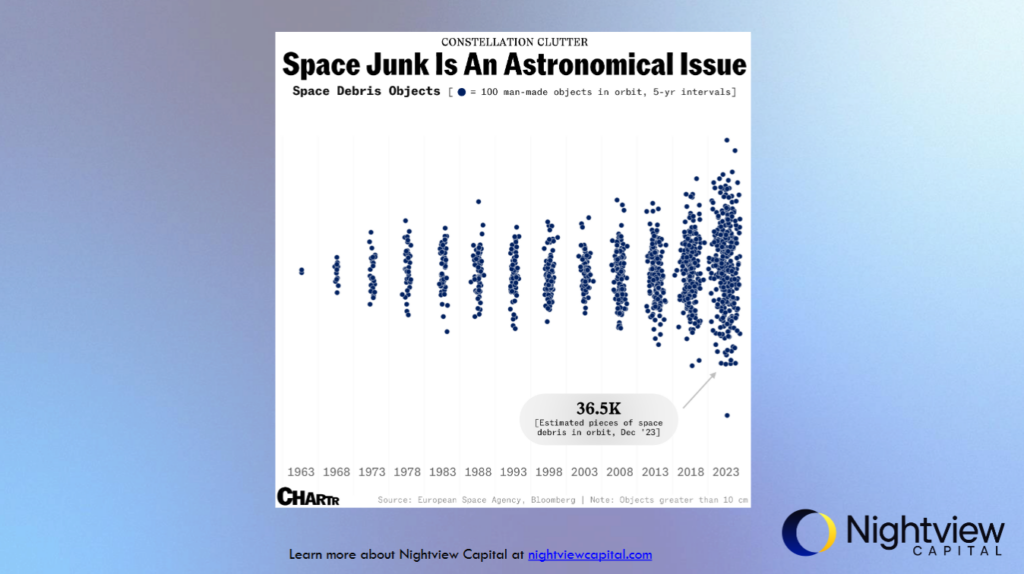
This graphic highlights the growing issue of space debris, illustrating the number of man-made objects in orbit from 1963 to 2023. Each dot represents 100 objects, showing a significant increase in space debris over time. By December 2023, there are an estimated 36,500 pieces of space debris in orbit. The trend underscores the escalating problem of space junk and its implications for satellite operations and space exploration.
Source